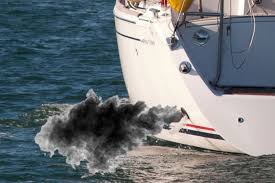Sailing boats are meant to be driven by the force of the wind. Still the use of engines, mostly diesel engines is hard to avoid. And let’s be honest: Smoke of diesel engines is often seen on sailing vessels. Most of it can be avoided by adjusting the motor, make sure you do this. What cannot be easily avoided is burning of fuel and emission of carbon dioxide. My point I want to make here is: use HVO fuel to reduce Carbom Emissions and smoke as well.
By the way, a common misconception is to let the engine warm up while idling. Actualy this make things worse – more cold wear on the engine and more environental impact. So make sure to put the the engine into gear and run it at low revs while it is cold but avoid idling at all.
I always try to minimize my envitonmental impact. I enjoy pristine nature a lot and want to avoid destroying or expoliting nature. Electrical propulsion seemed a good way to avoid the smoke and minimize environmental impact. Interestingly a study have proven this wrong. It is possibly overly simplified, there are other aspects taken into account. The conclusion is you can reduce environmental impact a lot and reduce smoke at the same time simply by using “Hydrotreated Vegetable Oil” (HVO) diesel. For detailed insights have a look at the ICOMIA study. For a critical discussion of the study see Yachting monthly - The true carbon cost of sailing.
I think that’s great news: you can have less Diesel bug, less smell and less environmental impact by using HVO fuel. You only have to find a HVO Gas station. Here is a HVO Gas station map

